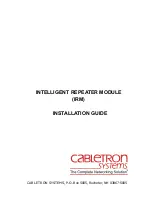
E-5
Englis
h
5.6
5.4 Installation in enamelled
drinking water cylinders
The installation, connection and operating instructions for the hot
water cylinder, as well as the technical regulations for drinking
water installations (TRWI) in accordance with DIN 1988, must be
adhered to at all times.
Pressure-resistant connection
Using unsuitable or non-functional cylinder connection fittings
will void any warranty claims. This also applies if the given
operating pressure is exceeded.
Water connection must only be made via a type-tested
diaphragm safety valve or a membrane safety valve combination
(connection fitting for pressure-resistant cylinders).
A safety valve combination consists of a shutoff, testing, return,
drainage and safety valve with expansion water drainage. This
component is installed between the cold water supply and cold
water inlet of the cylinder in
the order shown below
.
1)
Shutoff valve
2)
Pressure reducer
3)
Return inhibitor
4)
Test valve
5)
Connection for measuring devices
6)
Shutoff valve
7)
Discharge or collecting hopper
8)
Safety valve
9)
Drain valve
E
Screw-in heater (electric heating element)
S
Closed cylinder (water heater)
TW
Drinking water pipe (cold water)
TWW Drinking water pipe hot water
The safety valves used must be adjusted so that the pressure in
the container does not exceed the nominal value by more than 1
bar.
For closed water generators, the arrangement of the fittings and
safety devices must be observed. For open water cylinders, the
water outlet system must be designed in such a way that the
pressure in the container does not exceed the nominal pressure.
5.5 Notes on corrosion protection
Enamelled cylinders must be provided with adequate anode
protection on the boiler side, according to the manufacturer's
instructions.
Protective anodes (sacrificial anodes) in the container should be
replaced when more than 3/4 of the material is worn down (first
check after approx. two years of operation, in the case of very
hard water regularly, after approx. one year at the latest).
5.6 Electrical connection
ATTENTION!
For warranty reasons, installation of the heating element and initial start-
up must only be performed by authorized and qualified personnel.
ATTENTION!
The electrical connection must always be carried out according to the
type-related circuit diagram (connection diagram in casing cover).
ATTENTION!
Make sure that the connection voltage is correct!
All metal parts of the cylinder which can be touched must be included in
the protective measures.
A disconnecting switch (1 or 3-pole) with 3 mm contact clearance
must be provided for in the electrical supply line. A (slow-acting)
circuit breaker is also permissible as a disconnecting switch.
The connection cable must be fed through the pipe union
(included in the scope of supply) into the screw-in heater, and
must be secured using a strain relief device against being pulled
out and twisted.
NOTE
For touch protection with enamelled hot water cylinders, it is necessary
for the heating elements to be installed only in water heaters which have
water inlets and outlets made of metal and which are connected to the
protective conductor terminal (equipotential bonding).
1~230 V: Types CTHK 630 and CTHK 631
3~400 V: Types CTHK 632 to CTHK 636
)PUXBUFSFYUSBDUJPOQPJOUT












































